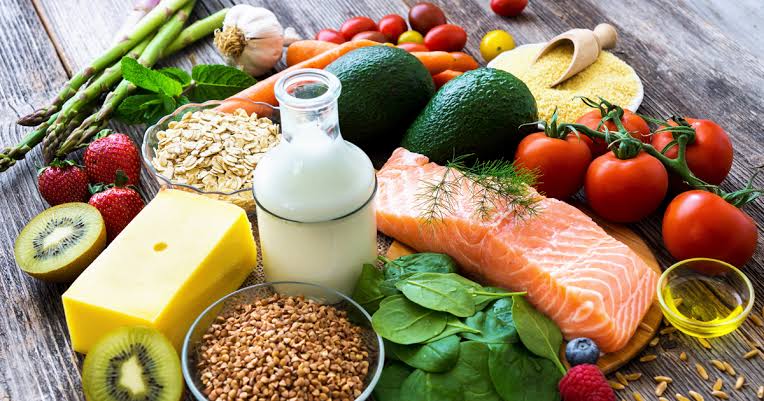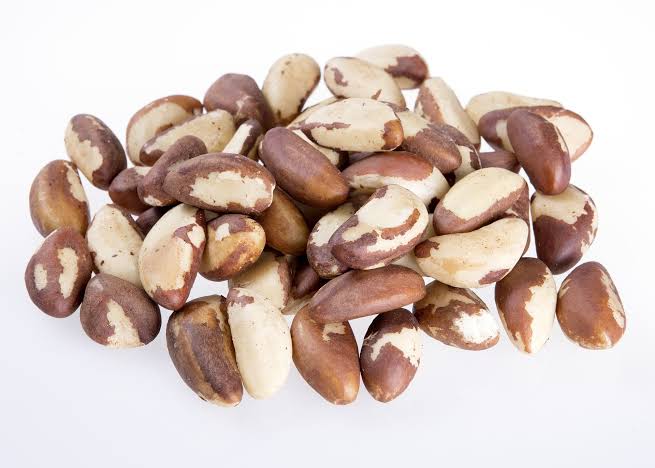Nutritionists and wellness experts continue to praise the benefits of such foods, despite the fact that medicine continues to evolve and branch out in many ways. Healthy eating has been shown to lower the risk of obesity, cardiovascular disease, and even certain forms of cancer.
However, knowing which foods to consume for particular health benefits can be challenging at times, that is why Nccmed identifies the health advantages of a much greater selection of foods.

For people who want to improve their wellbeing by eating well, we have a plethora of delicious and healthy choices.
A list of foods is provided below, along with information on their possible health benefits.
Please note that this article includes summaries and you should read individual articles for a complete list of potential health benefits.
Arugula

Arugula, like other leafy greens, has a very high nitrate content (more than 250 milligrammes per 100 grams). Dietary nitrate consumption has been shown to lower blood pressure, reduce the amount of oxygen required during exercise, and improve athletic performance.
Arugula’s possible health benefits include cancer prevention, osteoporosis prevention, and improved muscle oxygenation during exercise.
Read full details about arugula here.
Asparagus

Asparagus is high in vitamin B6, calcium, zinc, and magnesium, as well as being high in dietary fibre.
Asparagus has a number of health benefits, including lowering the risk of diabetes, avoiding kidney stones, and reducing the risk of neural tube defects in children.
Asparagus is also a natural diuretic, which means it can help with fluid flow, blood pressure, and edema.
Read full information about asparagus here.
Bananas
Bananas are naturally fat-free, cholesterol-free, sodium-free, and potassium-rich.
Bananas have the ability to lower blood pressure, reduce the risk of childhood leukaemia, and improve heart health.
Read full information about bananas here.
Basil

Vitamin A, vitamin K, vitamin C, magnesium, iron, potassium, and calcium are all abundant in basil.
Basil has been shown in studies to minimise inflammation and swelling, protect against the adverse effects of ageing, and treat arthritis and inflammatory bowel disease.
Read full information about basil here.
Almonds

Almonds are high in vitamin E, copper, magnesium, high-quality protein, and unsaturated fatty acids, all of which are beneficial to your health.
Almonds have been shown in studies to help prevent cardiovascular disease, reduce the risk of cancer, and extend life.
Read full information about almonds here.
Apples

Because of their impressive nutritional profile, apples are often referred to as “nutritional powerhouses.”
Vitamin C (a strong natural antioxidant), B-complex vitamins, dietary fibre, phytonutrients (which help protect the body from the harmful effects of free radicals), and minerals such as calcium and potassium are all found in apples.
According to studies, eating apples will help avoid dementia and lower the risk of stroke and diabetes.
Read full information about apples here.
Beetroot

Thanks to recent studies suggesting that beets and beetroot juice can boost athletic efficiency, lower blood pressure, and increase blood flow, beetroot, also known simply as the beet, has been gaining in popularity as a modern super food.
This is due in part to its high nitrate content, which raises nitric oxide levels in the body and plays an important role in heart and vascular health.
Beetroot is high in folate, manganese, thiamine, riboflavin, vitamin B-6, pantothenic acid, choline, betaine, magnesium, phosphorus, potassium, zinc, copper, and selenium, among other nutrients.
Read full information about Beetroot here.
Bok choy

Kale, broccoli, cauliflower, Brussels sprouts, cabbage, collard greens, rutabaga, and turnips are all members of the cruciferous vegetable family, as are bok choy, broccoli, cauliflower, Brussels sprouts, cabbage, collard greens, rutabaga, and turnips.
These nutrition powerhouses supply loads of nutrients for little calories. Cruciferous vegetables like bok choy should be at the top of your shopping list if you’re trying to eat healthier.
Read full information about bok choy here.
Broccoli
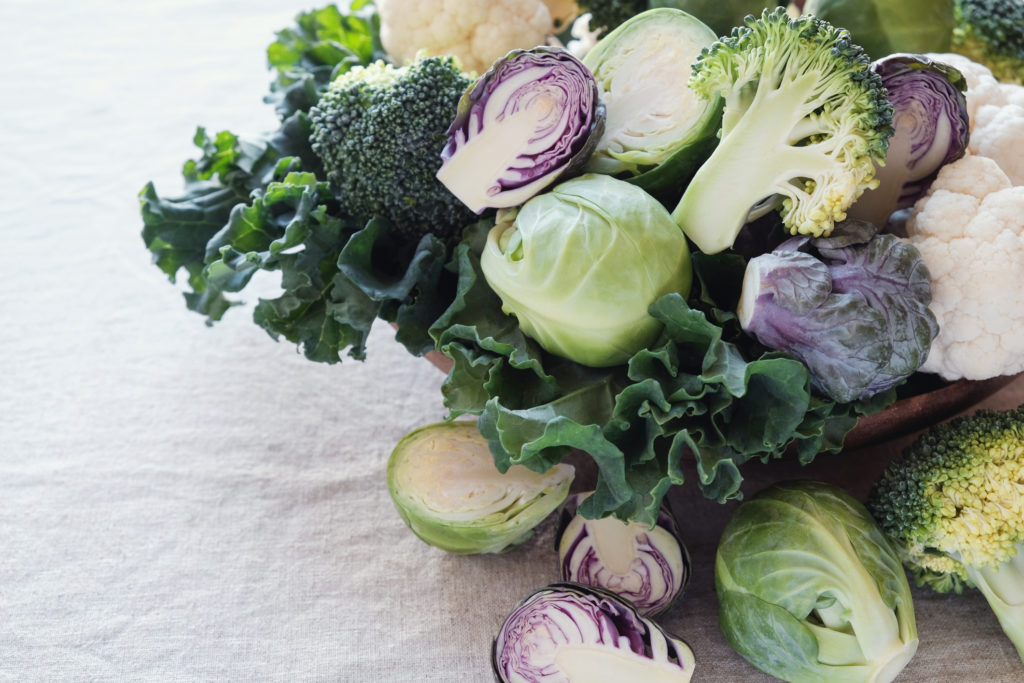
Broccoli has a high fibre content (both soluble and insoluble) and is a good source of vitamin C.
Vitamin A, iron, vitamin K, B-complex vitamins, zinc, phosphorus, and phytonutrients are all abundant in broccoli.
Broccoli has been shown in studies to help prevent osteoarthritis, protect skin from the effects of UV light, reverse diabetes heart damage, and lower the risk of bladder cancer.
Read full information about broccoli here.
Chickpeas

Chickpeas, also known as garbanzo beans, were first grown in the Mediterranean and Middle East and have since spread their culinary influence throughout the world.
Chickpeas can help with diabetes by improving glucose, lipids, and insulin levels, as well as maintaining bone strength and heart health.
Read full information about chickpeas here.
Chives

Chives are a nutrient-dense food, which means they are rich in beneficial nutrients like vitamins, minerals, and antioxidants while being low in calories.
The potential health benefits of chives include potential beneficial and preventative effects against cancer, prostate cancer, esophageal and stomach cancer, and positive effects on sleep and mood.
Read full information about chives here.
Chocolate

Chocolate is rich in antioxidants. Despite its bad reputation for causing weight gain, there are a variety of health advantages to eating it (particularly dark chocolate).
Lowering cholesterol levels, avoiding cognitive loss, and lowering the risk of cardiovascular disorders are all possible benefits of chocolate consumption.
Read full information about chocolate here.
Cilantro

Cilantro, also known as coriander in the UK, is made from the herb Coriandrum sativum. The leaves of the plant are called cilantro (Spanish translation) in the United States, and the seeds are called coriander.
Many studies have found that growing plant-based foods like cilantro lowers the risk of obesity, overall mortality, diabetes, and heart disease while also improving skin and hair health, increasing energy, and overall weight loss.
Read full information about cilantro here.
Cinnamon

Cinnamon has been shown in studies to be effective against HIV, to increase glucose and lipid levels in type 2 diabetes patients, to help prevent Alzheimer’s disease, and to avoid the degenerative process of multiple sclerosis (MS).
In addition, researchers at Penn State found that consuming cinnamon can help reduce the body’s negative responses to eating high-fat meals.
Read full information about cinnamon here.
Cantaloupe

Muskmelons, mush melons, rock melons, and Persian melons are all names for cantaloupes. They, like honeydew and watermelons, are members of the Cucurbitaceae botanical family.
Cantaloupe is high in antioxidants such as choline, zeaxanthin, and beta-carotene, which protect against a variety of diseases and conditions ranging from the common cold to cancer.
Cantaloupe has been shown to reduce the risk of developing asthma, manage blood pressure, help digestion, keep you hydrated, and reduce inflammation.
Read full information about cantaloupe here.
Carrots

Carrots contain a lot of vitamin A. They meet 210 percent of an average adult’s daily needs.
Carrots have a number of health benefits, including the prevention of lung cancer.
Trusted Source, which helps to restore vision by killing leukaemia cells and inhibiting their progression.
Read full information about carrots here.
Cauliflower

Cauliflowers belong to the brassica family, which includes cruciferous vegetables.
They are high in antioxidants and phytonutrients, which can help to prevent cancer.
They also contain fibre, which aids in satiety, weight loss, and a balanced digestive tract, as well as choline, which is essential for learning and memory, and a variety of other nutrients.
Cauliflower’s possible health benefits include preventing mutations and reducing free radical stress, preventing constipation, and improving memory.
Read full information about cauliflower here.
Celery

Celery has a lot of antioxidants, electrolytes, and vitamin K in it. It can also help rehydrate due to its high water content.
Celery can help to lower blood pressure, prevent cancer, and relieve joint pain, among other things.
Read full information about celery here.
Coffee

In the United States, coffee is one of the most popular sources of antioxidants.
Protecting against type 2 diabetes, preventing Parkinson’s disease, lowering the risk of liver cancer, preventing liver disease, and encouraging good heart health are some of the possible health benefits of drinking coffee in moderation.
Read full information about coffee here.
Collard greens

Kale, broccoli, Brussels sprouts, cabbage, rutabaga, and turnips are all members of the cruciferous vegetable family, as are collard greens.
Collard greens are high in vitamin K and contain other nutrients such as folate, thiamin, niacin, pantothenic acid, choline, phosphorus, and potassium.
Collard greens have been shown to improve bone health, reduce cancer risk, lower glucose levels in diabetics, and improve sleep and mood.
Read full information about collard greens here.
Cranberries

Cranberries are a good source of vitamin C, fibre, and vitamin E.
Cranberries have been shown to minimise the risk of cardiovascular disease (CVD), delay tumor growth, prevent urinary tract infections, and improve oral health by preventing bacteria from adhering to teeth in studies.
Read full information about cranberries here.
Edamame

Edamame is a form of young soybean that has been harvested before it has hardened. They can be bought shelled or in the pod, fresh or frozen.
Maintaining a healthy blood pressure, assisting with depression, promoting fertility, and reducing bone loss are all possible health benefits of edamame.
Read full information about edamame here.
Eggplant

The eggplant, also known as aubergine, garden egg, guinea squash, melongene, and brinjal, is known for its egg-like shape and vivid purple colour.
Supporting heart health, controlling weight and blood cholesterol levels, and anti-cancer effects are just a few of eggplant’s possible health benefits.
Read full information about eggplant here.
Flaxseed

According to the American Nutrition Association, flaxseed is not only “an excellent source of two fatty acids that are important for human health – linoleic acid and alpha-linolenic acid,” but also “an excellent source of fibre and a good source of minerals and vitamins.”
Lowering cholesterol, guarding against cancer, reducing hot flashes, and raising blood sugar levels are just a few of the possible health benefits of flaxseed.
Read full information about flaxseed here.
Garlic

Garlic is commonly used to treat a range of symptoms involving the circulatory system and the heart.
Garlic has been shown in studies to be a strong antibiotic that can help protect the heart during cardiac surgery and after a heart attack, minimise the risk of lung cancer, and lower high cholesterol and blood pressure levels.
Read full information about garlic here.
Ginger

Ginger contains a compound that is commonly used in antacid, laxative, and anti-gas drugs.
Ginger has been shown in studies to help avoid colon inflammation, minimise exercise-induced muscle pain, relieve chemotherapy-induced nausea, and reduce the severity of period pains.
Read full information about ginger here.
Grapes
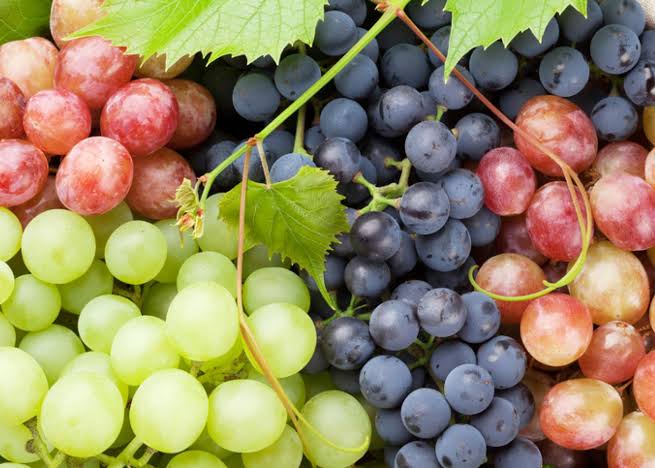
Grapes are a common finger food in countries all over the world because of their portability, texture, flavour, and variety.
Grapes have been linked to the prevention of cancer, heart disease, high blood pressure, and constipation, as well as the reduction of obesity and overall mortality, according to studies.
Read full information about grapes here.
Grapefruit

Grapefruit is a citrus fruit that has a
Grapefruits have a low calorie count but are high in nutrients. They promote clear, healthy skin, lower the risk of a variety of diseases and disorders, and may even aid weight loss when consumed as part of a balanced, varied diet.
Grapefruit has the ability to help with weight loss, blood pressure control, and heart health, as well as fighting free radicals.
Read full information about grapefruit here.
Green tea

Green tea contains the highest amount of antioxidants of any tea, making it one of the world’s healthiest beverages.
Green tea consumption has been linked to a lower risk of stroke and can aid in the treatment of prostate cancer, according to research.
Read full information about green tea here.
Honey

Honey contains antibacterial and antiseptic properties.
Honey has been shown in studies to help avoid GERD (gastroesophageal reflux disease), reduce the length of bacterial diarrhea, heal wounds, reduce seasonal allergies, and combat infections.
Read full information about honey here.
Kale

Vitamin K, vitamin A, beta-carotene, calcium, and vitamin C are all abundant in kale.
Reduced risk of some tumours, reduced risk of coronary heart disease, and lower levels of bad cholesterol are only a few of the possible health benefits of kale.
Read more information about kale here.
Kiwifruit

Kiwis are a nutrient-dense food, which means they are rich in nutrients while being low in calories. The vitamin C content of the kiwifruit is higher per ounce than that of most other fruits.
Maintaining good skin tone and texture, lowering blood pressure, and avoiding heart disease and stroke are all possible health benefits of eating kiwis.
Read full information about kiwifruit here.
Mango

The mango belongs to the drupe family, a form of plant food in which an outer fleshy portion surrounds a seed-filled shell (also known as a pit). Olives, dates, and coconuts are also types of drupes.
Many studies have shown that increasing plant-based foods like mangoes reduces the risk of obesity, diabetes, and heart disease, as well as promoting a healthier skin and hair, increased energy, and overall weight loss.
Read full information about mango here.
Milk

Dairy products, such as milk, are an excellent source of calcium in the diet. Calcium serves a variety of functions in the body, the most important of which is the development and maintenance of strong bones and teeth.
Calcium is also required for blood clotting and wound healing, blood pressure regulation, and muscle contractions, including heartbeat.
Magnesium, phosphorus, vitamin A, riboflavin, and vitamins B-6 and B-12 are all found in milk.
Maintaining bone, blood pressure, and heart health, as well as providing an increase in vitamin D, are all potential health benefits of milk. Vitamin D deficiency has been linked to depression, chronic fatigue, and PMS.
Read full information about milk here.
Milk alternatives

There are a variety of reasons why you might be looking for a dairy substitute, the most common of which are allergies and lactose intolerance.
Some people avoid dairy to follow a vegan diet, which excludes all foods derived from animals, such as milk, cheese, eggs, and honey.
Others may eliminate dairy from their diet to avoid hormones and antibiotics found in conventional milk, as a treatment for acne, or as part of the popular “Paleo” diet.
Soy isoflavones have been shown to help prevent heart disease and that taking at least 10 milligrammes per day can reduce breast cancer recurrence by 25%. Menopausal women may benefit from increased soy consumption.
Read full information about milk substitutes here.
Mint

Mint, also known as mentha, is a genus of about 15-20 plant species that includes peppermint and spearmint. Mint oil is commonly used in toothpaste, gum, candy, and beauty goods, and the leaves are used in teas and food either fresh or dried.
Mint is one of the foods with the highest antioxidant ability. Mint may help with allergies, the common cold, indigestion, irritable bowel syndrome (IBS), and skin conditions.
Read more information about mint here.
Mushrooms

Mushrooms are not actually plants, even though they are known as vegetables in the food industry. They are members of the fungi kingdom which have a variety of essential nutrients.
Mushrooms can help to inhibit the growth of cancer cells, regulate blood pressure, and improve immune responses to infection, among other things.
Read full information about mushrooms here.
Oats

Oats contain a lot of beta-glucan, which is a form of fibre. Beta-glucan has been shown to help reduce bad cholesterol levels.
Reduced risk of coronary artery disease, lower risk of colorectal cancer, and lower blood pressure are all possible health benefits of oats.
Read full information about oats here.
Oily fish

Oily fish, such as salmon or mackerel, are high in omega-3 fatty acids and lean protein.
Preventing cardiovascular disease, reducing the risk of rheumatoid arthritis, enhancing infant sensory, cognitive, and motor growth, improving memory, preserving vision, and preventing oral and skin cancers are all potential health benefits of consuming oily fish.
Read full information about oily fish here.
Olive oil
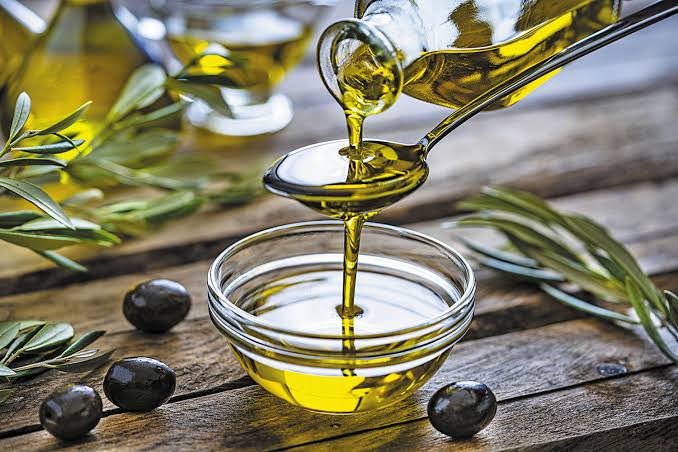
Olive oil is a form of oil that comes from
People who drink olive oil on a daily basis are less likely to develop cardiovascular problems such as hypertension (high blood pressure), stroke, and hyperlipidemia (high blood cholesterol and triglyceride levels).
Olive oil can also aid in the treatment of inflammation, endothelial dysfunction (problems with blood vessel inner linings), thrombosis, and carbohydrate metabolism.
Read full information about olive oil here.
Onions
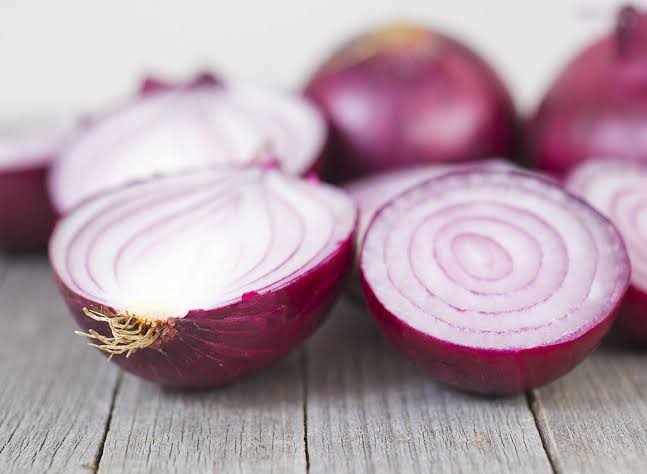
Onions come in a wide range of sizes, shapes, colours, and flavours. Red, yellow, and white onions are the most popular varieties.
Depending on the season in which they are grown and eaten, flavours can range from sweet and juicy with a mild flavour to sharp, spicy, and pungent. Every year, an estimated 105 billion pounds of onions are grown around the world.
Onions can have health benefits such as reducing the risk of many forms of cancer, improving mood, and maintaining skin and hair health.
Read full information about onions here.
Oranges

An orange contains more than 170 phytochemicals and 60 flavonoids, many of which have been shown to have anti-inflammatory and antioxidant properties.
Oranges also contain thiamin, riboflavin, niacin, vitamin B-6, folate, pantothenic acid, phosphorus, magnesium, manganese, selenium, and copper, as well as thiamin, riboflavin, niacin, vitamin B-6, folate, pantothenic acid, folate, pantothenic acid, phosphorus, magnesium, manganese, selenium, and copper Oranges are thought to help the immune system because of their high vitamin C content (more than twice the daily requirement).
Read full information about oranges here.
Oregano

Oregano is a herb that comes from the Mediterranean.
Vitamin K and dietary antioxidants are abundant in oregano.
Oregano has antimicrobial and anti-inflammatory properties, according to studies, and its constituents can help patients with breast cancer slow or prevent disease progression.
Read full information about oregano here.
Papayas

Papayas, also called papaws or pawpaws, are tropical fruits that grow in warm climates.
Reduced risk of heart disease, diabetes, and cancer, as well as improved metabolism, blood glucose regulation in diabetics, lower blood pressure, and wound healing, are all potential health benefits of papaya consumption.
Read full information about papaya here.
Peaches

Peaches are a fuzzy fruit that originated in northwest China. They belong to the stone fruit family, which includes cherries, apricots, plums, and nectarines, and have one big middle seed.
Vitamins E and K, niacin, folate, iron, choline, potassium, magnesium, phosphorus, manganese, zinc, and copper are all contained in at least 2% of the daily value in one medium peach. Obesity-related disorders including diabetes, metabolic syndrome, and cardiovascular disease have also been linked to them.
Read full information about peaches here.
Peppermint
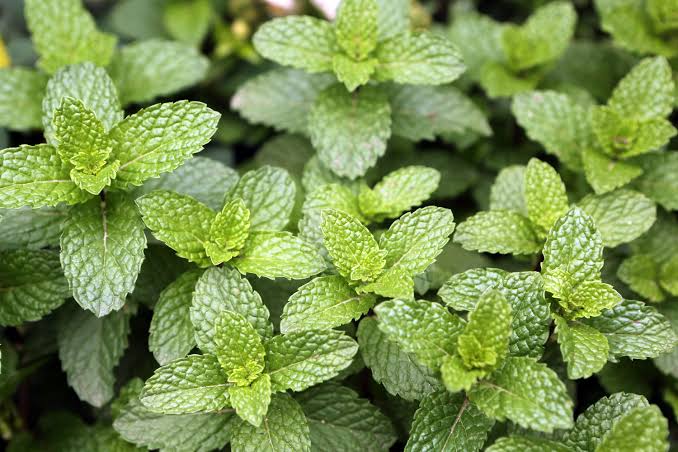
Because of its soothing properties, peppermint is used as a traditional or folk remedy for a variety of disorders and illnesses.
Treatment of irritable bowel syndrome (IBS), soothing skin irritation and itchiness, and avoiding the onset of headaches and related symptoms are all possible health benefits of peppermint.
Pineapple

Pineapple is high in thiamin, riboflavin, vitamin B-6, folate, pantothenic acid, magnesium, manganese, and potassium, among other vitamins and minerals. Antioxidants and polyphenols, such as beta-carotene, are also present.
Fresh pineapple is the only known source of bromelain, an enzyme that can help relieve joint pain and arthritis symptoms, minimise inflammation, prevent tumor development, and speed up recovery after plastic surgery.
Read full information about pineapple here.
Potatoes

The potato plant, like the tomato and eggplant, is a member of the nightshade family, which includes several species that are truly poisonous. Potatoes are also one of the most cost-effective universal crops to grow and are available all year.
Maintaining bone structure, supporting heart health, reducing chronic inflammation, and avoiding constipation are all advantages of eating potatoes.
Read more information about potatoes here.
Pumpkin

Pumpkin is a nutrient-dense food, meaning it’s high in vitamins and minerals while being low in calories. Pumpkin can be used in a variety of ways in your diet, including cakes, soups, salads, preserves, and even as a butter substitute.
Supporting heart health, eye health, encouraging fertility, and boosting immunity are only a few of the possible health benefits of pumpkin.
Read full information about pumpkin here.
Quinoa

Quinoa is classified as a whole grain in terms of nutrition. Whole grains are made up of the whole intact grain seed, with none of its parts removed.
White breads, white rice, and white pasta, on the other hand, have been milled or refined to produce a finer, lighter texture and are thus less nutrient dense. Quinoa is also a high-protein food.
Cardiovascular disease, type 2 diabetes, high blood pressure, colon cancer, and obesity can all be reduced by consuming 2-3 servings of whole grain foods a day. Many studies have shown that increasing whole grain consumption lowers the risk of all five of these lifestyle-related diseases.
Read full information about quinoa here.
Rosemary

Antioxidants and anti-inflammatory compounds abound in rosemary.
Rosemary has been shown in studies to help relieve indigestion, improve memory and concentration, and protect the nervous system, and it can help prevent macular degeneration.
Read full information about rosemary here.
Sage

Sage contains antioxidants (apigenin, diosmetin, and luteolin) as well as essential nutrients including vitamin K.
Sage has been shown in studies to enhance memory and information processing in people with moderate Alzheimer’s disease, as well as lower cholesterol and triglyceride levels in type 2 diabetes patients.
Read full information about sage.
Spearmint

Spearmint is packed with vitamins, antioxidants, and other essential nutrients.
Spearmint has been shown in studies to have antioxidant and antifungal effects, as well as to help with nausea and other digestive issues, as well as to treat hirsutism (abnormal hair growth).
Read full information about spearmint here.
Spinach

Spinach is one of the best sources of magnesium and calcium in the diet.
Spinach has the ability to aid in the management of diabetes, the prevention of cancer, the reduction of asthma risk, the reduction of blood pressure risk, and the improvement of bone health.
Read full information about spinach here.
Strawberries

Strawberries are one of the most popular, refreshing, and nutritious treats on the planet; they are high in vitamins and antioxidants, which can help you stay healthy.
Strawberry consumption can reduce the risk of heart disease, stroke, cancer, high blood pressure, constipation, allergies, diabetes, and depression.
Read more information about strawberries here.
Sweet potatoes

Sweet potatoes are high in vitamins and minerals. One medium potato contains over 400 percent of your daily vitamin A requirements, as well as a lot of fibre and potassium.
Sweet potatoes can have health benefits such as preventing prostate cancer, encouraging fertility, improving immunity, and helping vision.
Read full information about sweet potatoes here.
Thyme

According to scientists at Leeds Metropolitan University in England, thyme formulations could be more effective than acne prescription creams.
Thyme has been shown to protect against hypertension, aid in the battle against food–borne bacterial infections, and cause cell death in breast cancer cells in studies.
Read full information about the thyme here.
Tofu

Tofu, which is made from soybean curds, is naturally gluten-free, low in calories, cholesterol-free, and high in protein, iron, and calcium.
The isoflavones (a form of phytoestrogen) found in soy foods have been linked to a lower risk of osteoporosis, while the calcium and magnesium in soy may help with PMS symptoms, blood sugar regulation, and migraine headache prevention.
Read full information about tofu here.
Tomatoes

Because of beneficial phytochemicals like lycopene, the tomato has been dubbed a “functional crop,” a food that provides more than only essential nutrition, avoiding chronic disease and offering other health benefits.
Tomatoes are high in vitamins A and C, as well as folic acid. Tomatoes are high in alpha-lipoic acid, lycopene, choline, folic acid, beta-carotene, and lutein, among other nutrients and antioxidants.
The advantages of eating a variety of fruits and vegetables, including tomatoes, are numerous. The risk of heart disease, diabetes, and cancer decreases as plant food intake rises.
Read full information about tomatoes here.
Watermelon

Thiamin, riboflavin, niacin, vitamin B-6, folate, pantothenic acid, magnesium, phosphorus, potassium, zinc, copper, manganese, selenium, choline, lycopene, and betaine are among the nutrients contained in watermelon. Lycopene is abundant in watermelon.
Asthma prevention, blood pressure reduction, digestive control, inflammation reduction, and healthy hair and skin are all potential health benefits of watermelon. Watermelon is also a good source of lycopene.
Read full information about watermelon here.
Sources
- Akhondzadeh, S., Noroozian, M., Mohammadi, M., Ohadinia, S., Jamshidi, A. H., & Khani, M. (2003). Salvia officinalis extract in the treatment of patients with mild to moderate Alzheimer’s disease: a double blind, randomized and placebo‐controlled trial. Journal of Clinical Pharmacy and Therapeutics, 28(1), 53-59
http://onlinelibrary.wiley.com/doi/10.1046/j.1365-2710.2003.00463.x/full - Al Dhaheri, Y., Attoub, S., Arafat, K., AbuQamar, S., Viallet, J., Saleh, A., … & Iratni, R. (2013). Anti-metastatic and anti-tumor growth effects of Origanum majorana on highly metastatic human breast cancer cells: inhibition of NFκB signaling and reduction of nitric oxide production. PLoS One. 8(7), e68808
http://journals.plos.org/plosone/article?id=10.1371/journal.pone.0068808 - How can these popular foods benefit our health? https://www.medicalnewstoday.com/articles/269143
- Alam, M. S., Roy, P. K., Miah, A. R., Mollick, S. H., Khan, M. R., Mahmud, M. C., & Khatun, S. (2013). Efficacy of Peppermint oil in diarrhea predominant IBS-a double blind randomized placebo-controlled study. Mymensingh medical journal: MMJ. 22(1), 27-30
http://europepmc.org/abstract/med/23416804 - Azad, N., Rasoolijazi, H., Joghataie, M. T., & Soleimani, S. (2011). Neuroprotective effects of carnosic acid in an experimental model of Alzheimer’s disease in rats. Cell Journal (Yakhteh). 13(1), 39
https://www.ncbi.nlm.nih.gov/pmc/articles/PMC3652539/ - Bao, Y., Han, J., Hu, F. B., Giovannucci, E. L., Stampfer, M. J., Willett, W. C., & Fuchs, C. S. (2013, November 21). Association of nut consumption with total and cause-specific mortality. New England Journal of Medicine. 2013(369), 2001-2011
http://www.nejm.org/doi/full/10.1056/NEJMoa1307352 - Black, C. D., Herring, M. P., Hurley, D. J., & O’Connor, P. J. (2010, September). Ginger (Zingiber officinale) reduces muscle pain caused by eccentric exercise. The Journal of Pain. 11(9), 894-903
http://www.sciencedirect.com/science/article/pii/S1526590009009158 - Boucher, O., Burden, M. J., Muckle, G., Saint-Amour, D., Ayotte, P., Dewailly, E., … & Jacobson, J. L. (2011). Neurophysiologic and neurobehavioral evidence of beneficial effects of prenatal omega-3 fatty acid intake on memory function at school age. The American Journal of Clinical Nutrition. 93(5), 1025-1037
http://ajcn.nutrition.org/content/93/5/1025.short - Bravi, F., Bosetti, C., Tavani, A., Gallus, S., & La Vecchia, C. (2013, November). Coffee reduces risk for hepatocellular carcinoma: an updated meta-analysis. Clinical Gastroenterology and Hepatology. 11(11), 1413-1421
http://www.sciencedirect.com/science/article/pii/S1542356513006095 - Broccoli sprout-derived extract protects against ultraviolet radiation. (2007, October 22). Johns Hopkins Medicine
http://www.hopkinsmedicine.org/news/media/releases/Broccoli_SproutDerived_Extract_Protects_Against_Ultraviolet_Radiation - Bozkurt, E., Atmaca, H., Kisim, A., Uzunoglu, S., Uslu, R., & Karaca, B. (2012). Effects of Thymus serpyllum extract on cell proliferation, apoptosis and epigenetic events in human breast cancer cells. Nutrition and cancer, 64(8), 1245-1250
http://www.tandfonline.com/doi/abs/10.1080/01635581.2012.719658 - Carter, J. R., Schwartz, C. E., Yang, H., & Joyner, M. J. (2013, April 1). Fish oil and neurovascular reactivity to mental stress in humans. American Journal of Physiology-Regulatory, Integrative and Comparative Physiology, 304(7), R523-R530
http://ajpregu.physiology.org/content/304/7/R523.short - Covas, M. I. (2007). Olive oil and the cardiovascular system. Pharmacological Research, 55(3), 175-186
http://www.sciencedirect.com/science/article/pii/S1043661807000333 - Cranberry. (2017, March 7). Memorial Sloan Kettering Cancer Center
https://www.mskcc.org/cancer-care/integrative-medicine/herbs/cranberry - Davidson, R. K., Jupp, O., Ferrars, R., Kay, C. D., Culley, K. L., Norton, R., … & Clark, I. M. (2013, November 27). Sulforaphane Represses Matrix‐Degrading Proteases and Protects Cartilage From Destruction In Vitro and In Vivo. Arthritis & Rheumatology, 65(12), 3130-3140
http://onlinelibrary.wiley.com/doi/10.1002/art.38133/full - Demark-Wahnefried, W., Polascik, T. J., George, S. L., Switzer, B. R., Madden, J. F., Ruffin, M. T., … & Walther, P. J. (2008, December). Flaxseed supplementation (not dietary fat restriction) reduces prostate cancer proliferation rates in men presurgery. Cancer Epidemiology and Prevention Biomarkers, 17(12), 3577-3587
http://cebp.aacrjournals.org/content/cebp/17/12/3577.full.pdf - Di Giuseppe, D., Wallin, A., Bottai, M., Askling, J., & Wolk, A. (2014). Long-term intake of dietary long-chain n-3 polyunsaturated fatty acids and risk of rheumatoid arthritis: a prospective cohort study of women. Annals of the rheumatic diseases, 73(11), 1949-1953
http://ard.bmj.com/content/73/11/1949.short - Dornstauder, B., Suh, M., Kuny, S., Gaillard, F., MacDonald, I. M., Clandinin, M. T., & Sauvé, Y. (2012). Dietary Docosahexaenoic Acid Supplementation Prevents Age-Related Functional Losses and A2E Accumulation in the RetinaDietary DHA Delays Retinal Degeneration. Investigative ophthalmology & visual science, 53(4), 2256-2265
http://iovs.arvojournals.org/article.aspx?articleid=2188773 - Durak, I., Kavutcu, M., Aytaç, B., Avcı, A., Devrim, E., Özbek, H., & Öztürk, H. S. (2004, June). Effects of garlic extract consumption on blood lipid and oxidant/antioxidant parameters in humans with high blood cholesterol. The Journal of nutritional biochemistry, 15(6), 373-377
http://www.sciencedirect.com/science/article/pii/S0955286304000403 - Faleiro, L., Miguel, G., Gomes, S., Costa, L., Venâncio, F., Teixeira, A., … & Pedro, L. G. (2005). Antibacterial and antioxidant activities of essential oils isolated from Thymbra capitata L.(Cav.) and Origanum vulgare L. Journal of Agricultural and Food Chemistry, 53(21), 8162-8168
http://pubs.acs.org/doi/abs/10.1021/jf0510079 - Flaxseed, a neglected food. (2015). American Nutrition Association
http://americannutritionassociation.org/newsletter/flaxseed-neglected-food - Frydman-Marom, A., Levin, A., Farfara, D., Benromano, T., Scherzer-Attali, R., Peled, S., … & Ovadia, M. (2011, January 28). Orally administrated cinnamon extract reduces β-amyloid oligomerization and corrects cognitive impairment in Alzheimer’s disease animal models. PloS one, 6(1), e16564
http://journals.plos.org/plosone/article?id=10.1371/journal.pone.0016564 - Gertsch, J., Leonti, M., Raduner, S., Racz, I., Chen, J. Z., Xie, X. Q., … & Zimmer, A. (2008). Beta-caryophyllene is a dietary cannabinoid. Proceedings of the National Academy of Sciences, 105(26), 9099-9104
http://www.pnas.org/content/105/26/9099.short - Ginger quells cancer patients’ nausea from chemotherapy. (2009, May 15). University of Rochester Medical Center
https://www.urmc.rochester.edu/news/story/2491/ginger-quells-cancer-patients-nausea-from-chemotherapy.aspx - Goto, A., Song, Y., Chen, B. H., Manson, J. E., Buring, J. E., & Liu, S. (2011, January). Coffee and caffeine consumption in relation to sex hormone–binding globulin and risk of type 2 diabetes in postmenopausal women. Diabetes, 60(1), 269-275
http://diabetes.diabetesjournals.org/content/60/1/269.short - Haffejee, I. E., & Moosa, A. (1985). Honey in the treatment of infantile gastroenteritis. Br Med J (Clin Res Ed), 290(6485), 1866-1867
http://www.bmj.com/content/290/6485/1866.short - Heo, H. J., Choi, S. J., Choi, S. G., Shin, D. H., Lee, J. M., & Lee, C. Y. (2008, January 24). Effects of banana, orange, and apple on oxidative stress‐induced neurotoxicity in PC12 cells. Journal of food science, 73(2)
http://onlinelibrary.wiley.com/doi/10.1111/j.1750-3841.2007.00632.x/full - Iowa State NWRC study finds flaxseed lowers high cholesterol in men. (2010, March 17). Iowa State University
http://archive.news.iastate.edu/news/2010/mar/flaxseed - Jenkins, D. J., Kendall, C. W., Marchie, A., Parker, T. L., Connelly, P. W., Qian, W., … & Spiller, G. A. (2002, September). Dose response of almonds on coronary heart disease risk factors: blood lipids, oxidized low-density lipoproteins, lipoprotein (a), homocysteine, and pulmonary nitric oxide. Circulation, 106(11), 1327-1332
https://www.ncbi.nlm.nih.gov/pubmed/12221048 - Jenabi, E. (2013). The effect of ginger for relieving of primary dysmenorrhoea. Age (year), 21(1.16), 21-54
http://www.jpma.org.pk/PdfDownload/3925.pdf - Jin, Z. Y., Wu, M., Han, R. Q., Zhang, X. F., Wang, X. S., Liu, A. M., … & Zhao, J. K. (2013, August 8). Raw garlic consumption as a protective factor for lung cancer, a population-based case–control study in a Chinese population. Cancer prevention Research
http://cancerpreventionresearch.aacrjournals.org/content/canprevres/early/2013/05/08/1940-6207.CAPR-13-0015.full.pdf - Jull, A. B., Rodgers, A., & Walker, N. (2008, October 8). Honey as a topical treatment for wounds. Cochrane Database Syst Rev, 4. Retrieved fropm
http://onlinelibrary.wiley.com/doi/10.1002/14651858.CD005083.pub2/full - Kanatt, S. R., Chander, R., & Sharma, A. (2007). Antioxidant potential of mint (Mentha spicata L.) in radiation-processed lamb meat. Food Chemistry. 100(2), 451-458
http://www.sciencedirect.com/science/article/pii/S030881460500885X - Khan, A., Safdar, M., Khan, M. M. A., Khattak, K. N., & Anderson, R. A. (2003). Cinnamon improves glucose and lipids of people with type 2 diabetes. Diabetes care. 26(12), 3215-3218
http://care.diabetesjournals.org/content/26/12/3215.short - Kianbakht, S., & Dabaghian, F. H. (2013). Improved glycemic control and lipid profile in hyperlipidemic type 2 diabetic patients consuming Salvia officinalis L. leaf extract: a randomized placebo. Controlled clinical trial. Complementary Therapies in Medicine, 21(5), 441-446
http://www.sciencedirect.com/science/article/pii/S0965229913001180 - Kneckt, P., Isotupa, S., Rissanen, H., & Heliovaara, M. (2000). Quercetin intake and the incidence of cerebrovascular disease. European Journal of Clinical Nutrition. 54(5), 415
https://search.proquest.com/openview/f58d47b4397db20c73221a0e4fb3ddca/1?pq-origsite=gscholar&cbl=33883 - Kwakman, P. H., te Velde, A. A., de Boer, L., Speijer, D., Vandenbroucke-Grauls, C. M., & Zaat, S. A. (2010). How honey kills bacteria. The FASEB Journal. 24(7), 2576-2582
http://www.fasebj.org/content/24/7/2576.short - Lammert, C., Juran, B. D., Schlicht, E., Xie, X., Atkinson, E. J., de Andrade, M., & Lazaridis, K. (2013, May). 630 Coffee Consumption Is Associated With Reduced Risk of Primary Sclerosing Cholangitis but Not Primary Biliary Cirrhosis. Gastroenterology. 144(5), S-956
http://www.gastrojournal.org/article/S0016-5085(13)63555-6/abstract - Lu, X., Samuelson, D. R., Rasco, B. A., & Konkel, M. E. (2012, May). Antimicrobial effect of diallyl sulphide on Campylobacter jejuni biofilms. Journal of Antimicrobial Chemotherapy. 67(8), 1915-1926
https://academic.oup.com/jac/article/67/8/1915/746474/Antimicrobial-effect-of-diallyl-sulphide-on - Math, M. V., & Balasubramanium, P. (2002). Oesophagus; Heart burn and Honey: Rapid Response. BMJ. 5
http://www.bmj.com/rapid-response/2011/10/28/oesophagus-heartburn-and-honey - McCall, J., Hidalgo, G., Asadishad, B., & Tufenkji, N. (2013, June 5). Cranberry impairs selected behaviors essential for virulence in Proteus mirabilis HI4320. Canadian Journal of Microbiology. 59(6), 430-436
http://www.nrcresearchpress.com/doi/abs/10.1139/cjm-2012-0744#.WYm29NPytTY - McKay, D. L., & Blumberg, J. B. (2007, November 1). Cranberries (Vaccinium macrocarpon) and cardiovascular disease risk factors. Nutrition Reviews. 65(11), 490-502
https://academic.oup.com/nutritionreviews/article-abstract/65/11/490/1907389 - Michaud, D. S., Spiegelman, D., Clinton, S. K., Rimm, E. B., Willett, W. C., & Giovannucci, E. L. (1999, April 7). Fruit and vegetable intake and incidence of bladder cancer in a male prospective cohort. Journal of the National Cancer Institute. 91(7), 605-613. Retrieved from
https://www.ncbi.nlm.nih.gov/pubmed/10203279 - Mihailovic-Stanojevic, N., Belščak-Cvitanović, A., Grujić-Milanović, J., Ivanov, M., Jovović, D., Bugarski, D., & Miloradović, Z. (2013). Antioxidant and antihypertensive activity of extract from Thymus serpyllum L. in experimental hypertension. Plant Foods for Human Nutrition, 68(3), 235-240
https://link.springer.com/article/10.1007/s11130-013-0368-7 - Moss, M., & Oliver, L. (2012). Plasma 1, 8-cineole correlates with cognitive performance following exposure to rosemary essential oil aroma. Therapeutic Advances in Psychopharmacology. 2(3), 103-113
http://journals.sagepub.com/doi/abs/10.1177/2045125312436573 - Mostofsky, E., Rice, M. S., Levitan, E. B., & Mittleman, M. A. (2012, July 17). Habitual coffee consumption and risk of heart failure. Circulation: Heart Failure. 5(4), 401-405
http://circheartfailure.ahajournals.org/content/5/4/401.short - Muraki, I., Imamura, F., Manson, J. E., Hu, F. B., Willett, W. C., van Dam, R. M., & Sun, Q. (2013). Fruit consumption and risk of type 2 diabetes: results from three prospective longitudinal cohort studies. BMJ. 347, f5001
http://www.bmj.com/content/347/bmj.f5001/ - Narendran, R., Frankle, W. G., Mason, N. S., Muldoon, M. F., & Moghaddam, B. (2012). Improved working memory but no effect on striatal vesicular monoamine transporter type 2 after omega-3 polyunsaturated fatty acid supplementation. PloS one. 7(10), e46832
http://journals.plos.org/plosone/article?id=10.1371/journal.pone.0046832 - Nikolakopoulou, Z., Nteliopoulos, G., Michael-Titus, A. T., & Parkinson, E. K. (2013). Omega-3 polyunsaturated fatty acids selectively inhibit growth in neoplastic oral keratinocytes by differentially activating ERK1/2. Carcinogenesis. 34(12), 2716-2725
https://academic.oup.com/carcin/article/34/12/2716/2464040/Omega-3-polyunsaturated-fatty-acids-selectively - Nosrati, S., Esmailzadeh-Hosseini, S. A., Sarpeleh, A., Soflaei Shahrbabak, M., & Soflaei Shahrbabak, Y. (2011). Antifungal Activity of Spearmint (Mentha Spicata L.) Essential Oil on Fusarium oxysporum f. sp. radicis-cucumerinum the Causal Agent of Stem and Crown Rot of Greenhouse Cucumber in Yazd, Iran. In International Conference on Environmental and Agricultural Engineering, Chengdu, China held on (pp. 52-56)
http://www.ipcbee.com/vol15/10-U00041.pdf - Pahan, K. (2015, September 14). Prospects of cinnamon in multiple sclerosis. Journal of multiple sclerosis, 2(3), 1000149
https://www.ncbi.nlm.nih.gov/pmc/articles/PMC4568834/ - Phadtare, S., Pandit, R., Shinde, V., & Mahadik, K. (2013). Comparative phytochemical and pharmacological evaluations of two varieties of Ocimum basilicum for antiarthritic activity. Journal of Pharmacognosy and Phytochemistry, 2(2)
http://www.phytojournal.com/archives/?year=2013&vol=2&issue=2&part=B&ArticleId=152 - Pisani, P., Berrino, F., Macaluso, M., Pastorino, U., Crosignani, P., & Baldasseroni, A. (1986, December). Carrots, green vegetables and lung cancer: a case-control study. International Journal of Epidemiology, 15(4), 463-468
https://www.ncbi.nlm.nih.gov/pubmed/3818153 - Prakash, P., & Gupta, N. (2005, September 21). Therapeutic uses of Ocimum sanctum Linn (Tulsi) with a note on eugenol and its pharmacological actions: a short review. Indian Journal of Physiology and Pharmacology, 49(2), 125
http://ijpp.com/IJPP%20archives/2005_49_2/125-131.pdf - Premanathan, M., Rajendran, S., Ramanathan, T., & Kathiresan, K. (2000, September). A survey of some Indian medicinal plants for anti-human immunodeficiency virus (HIV) activity. Indian Journal of Medical Research. 112, 73
https://search.proquest.com/openview/4ccae43b4086ca488297d37a9e622c3a/1?pq-origsite=gscholar&cbl=37533 - Rezaie, T., McKercher, S. R., Kosaka, K., Seki, M., Wheeler, L., Viswanath, V., … & Tozawa, T. (2012). Protective effect of carnosic acid, a pro-electrophilic compound, in models of oxidative stress and light-induced retinal degeneration protective effect of carnosic acid. Investigative Ophthalmology & Visual Science. 53(12), 7847-7854
http://iovs.arvojournals.org/article.aspx?articleid=2127627 - Rosemary. (n.d.). University of Maryland Medical Center
http://www.umm.edu/health/medical/altmed/herb/rosemary - Ross, G. W., Abbott, R. D., Petrovitch, H., Morens, D. M., Grandinetti, A., Tung, K. H., … & Popper, J. S. (2000, May 24). Association of coffee and caffeine intake with the risk of Parkinson disease. Jama, 283(20), 2674-2679
http://jamanetwork.com/journals/jama/fullarticle/192731 - Roussos, A. P., & Hirsch, A. R. (2014). Alliaceous migraines. Headache: The Journal of Head and Face Pain, 54(2), 378-382
http://onlinelibrary.wiley.com/doi/10.1111/head.12091/full - Saarinen, K., Jantunen, J., & Haahtela, T. (2011). Birch pollen honey for birch pollen allergy–a randomized controlled pilot study. International archives of allergy and immunology, 155(2), 160-166
https://www.karger.com/Article/Abstract/319821 - Sienkiewicz, M., Lysakowska, M., Ciecwierz, J., Denys, P., & Kowalczyk, E. (2011). Antibacterial activity of thyme and lavender essential oils. Medicinal Chemistry, 7(6), 674-689
http://www.ingentaconnect.com/content/ben/mc/2011/00000007/00000006/art00017 - Skulas-Ray, A. C., Kris-Etherton, P. M., Teeter, D. L., Chen, C. O., Heuvel, J. P. V., & West, S. G. (2011). A high antioxidant spice blend attenuates postprandial insulin and triglyceride responses and increases some plasma measures of antioxidant activity in healthy, overweight men. The Journal of nutrition. 141(8), 1451-1457
http://jn.nutrition.org/content/141/8/1451.short - Tea “controls female hair growth.” (2007, February 20). BBC
http://news.bbc.co.uk/1/hi/6376599.stm - Thyme for a more natural cure for acne. (2013, November 18). Leeds Beckett University
http://www.leedsbeckett.ac.uk/news/thyme-for-a-more-natural-cure-to-acne/ - Xue, M., Qian, Q., Adaikalakoteswari, A., Rabbani, N., Babaei-Jadidi, R., & Thornalley, P. J. (2008, October). Activation of NF-E2–related factor-2 reverses biochemical dysfunction of endothelial cells induced by hyperglycemia linked to vascular disease. Diabetes. 57(10), 2809-2817
http://diabetes.diabetesjournals.org/content/57/10/2809.short - Zaini, R., Clench, M. R., & Le Maitre, C. L. (2011, November). Bioactive chemicals from carrot (Daucus carota) juice extracts for the treatment of leukemia. Journal of Medicinal Food. 14(11), 1303-1312
http://online.liebertpub.com/doi/abs/10.1089/jmf.2010.0284 - Zick, S. M., Turgeon, D. K., Vareed, S. K., Ruffin, M. T., Litzinger, A. J., Wright, B. D., … & Brenner, D. E. (2011, November). Phase II study of the effects of ginger root extract on eicosanoids in colon mucosa in people at normal risk for colorectal cancer. Cancer Prevention Research. 4(11), 1929-1937
http://cancerpreventionresearch.aacrjournals.org/content/4/11/1929.short
